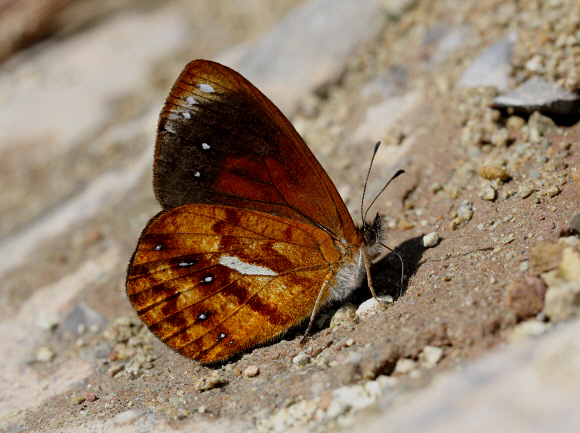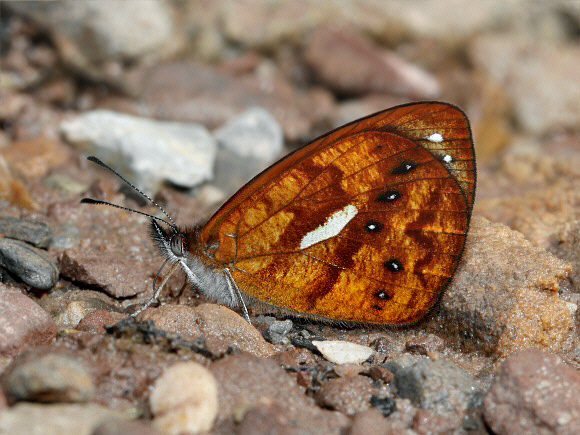
Introduction
There are 1100 known species of Satyrinae in the neotropical region. About 570 of these are placed in the subtribe Pronophilina – a diverse group of high altitude cloudforest butterflies, all of which are confined to the neotropical region. The vast majority are found only in the Andes, but 4 species are known from the Atlantic cloudforests of Brazil, and there are a further 6 species that are endemic to Guatemala, Costa Rica or Mexico. More oddly there is one genus Calisto that is found exclusively on the Caribbean islands of Cuba and Hispaniola.
The genus Lymanopoda is comprised of 57 small species. They are typically brown in colour, and have small ocelli or spots arranged in a characteristic undulating line across both wings. In some species such as apulia and albomaculata these spots are highly conspicuous, while in others such as obsoleta they are greatly reduced.
Lymanopoda rana was formerly regarded as a subspecies of ferruginosa but differs in being larger. Unlike ferruginosa it has a rusty area over the basal two-thirds of the underside forewing, and the underside hindwing is more strongly marked, with more prominent white spots set within elongated black ocelli. Both species are sympatric at lower elevations, but rana is found at elevations as high as 2400m, which is above the elevational limit of ferruginosa.
Lymanopoda rana is endemic to central and northern Peru.
Habitats
This is a high altitude cloudforest species, occurring at elevations between about 1800-2400m.
Lifecycle
The lifecycle appears to be unrecorded. The following generalisations are applicable to the subtribe Pronophilina and probably also apply to Lymanopoda: The eggs are round, white or pale greenish white, and laid singly on the foodplants or on surrounding vegetation. The larvae are typically pale brown, marked along the back and sides with narrow dark stripes, and tapering towards each end. The head is large in proportion to the body and has two short forward-pointing horns. The tip of the abdomen is equipped with a pair of caudal prongs which are used to flick the frass away from the feeding area. The larvae of all known Pronophilina feed on Chusquea – a genus of bamboo which grows in thickets, mainly along the courses of streams.
Adult behaviour
Lymanopoda rana is usually seen as singletons amidst mixed Pronophiline aggregations, drinking at damp spots along roadsides or the edges of streams.

